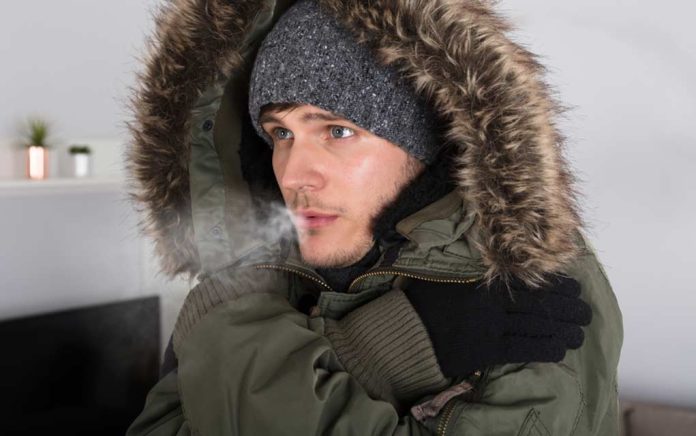
(TacticalNews.com) – Winter storms are nothing to take lightly. A bad storm can knock down power lines, leaving homes in the cold without electricity. Without a wood-burning stove or a fireplace, such an event could put many people in big trouble. If a winter storm were to strike your home, would you know how to heat a room to stay alive?
Trap the Heat
The first step in heating a cold room during a power outage is to ensure the heat can’t escape. Trapping heat in means avoiding opening and closing doors, closing all the windows (it’s winter, so they should be closed anyway) and closing all the doors in the house.
Focus on heating one room. It’s best to choose a room that can fit the entire family, but that also won’t leak heat down hallways or into adjacent rooms. Basement rooms work well because they’re insulated by the ground.
Bust out the sleeping bags, the blankets, and keep everyone in one room. The combined body heat will help to warm the space in combination with the other heat sources you choose to work with. To make it fun, set up a tent in the room and have everyone sleep in it. The smaller space will trap the heat better, and the kids will enjoy the camp-out.
After finishing these steps, it’s time to block any drafts. Blankets or towels placed at the base of doors will prevent air from leaking through the cracks. Heavy blankets hung over windows work to trap warm air in, as well. If you don’t have extra blankets on hand, close the blinds and pull the drapes shut — it’s better than nothing.
Bring the Heat
A wood stove or a fireplace is the best option for generating heat in a cold building, but not every home has one. Propane heaters are a possibility, but not all of them are safe for indoor use, especially when all of the ventilation has been closed off. Carbon monoxide poisoning associated with poor ventilation can kill as easily as hypothermia, so trading one danger for another isn’t a solution to the problem.
An indoor propane heater should be used in a room that is equipped with a carbon monoxide detector. Check the batteries in the detector before using the heater. The detector won’t be any good if the batteries are dead.
Chemical hand warmers can help warm extremities. These are inexpensive options that really pack a punch, especially when there aren’t a lot of other options available.
Candles will help heat the room as well, but they’ll need to be carefully watched to ensure they don’t get tipped over. Avoid open flames larger than a candle unless contained in a fireplace or wood stove to avoid starting a house fire.
Layer Up!
Even if you can’t get the room temperature up, you can still keep warm using your body heat. Layering on clothing will trap that heat in, keeping you nice and toasty even when the house is cold. Loose layers of wool clothing will provide insulation, creating pockets of dead air that will be warmed by the body.
Since a large portion of body heat escapes through the scalp, put on a hat or a beanie. A few pairs of socks will help keep your feet warm, especially with sturdy shoes or boots. Gloves will aid in keeping your hands warm as well.
To keep your body producing heat, consume calories for it to burn. Hot beverages can provide a nice boost of warmth from the inside out, if you can make them. In a worst-case scenario, an empty soup can over a burning candle can boil water for hot cocoa. Make sure not to burn yourself on the hot metal (or the candle).
Not every survival scenario has to be a world-ending event. A simple blackout during the winter can be deadly — if you’re not prepared.
For additional tips for handling the colder months, click here.
Do you have any other tips on how to stay warm during the winter that wasn’t covered here? Reply to your email and let us know, we would love to hear from you!
Copyright 2021, TacticalNews.com



















